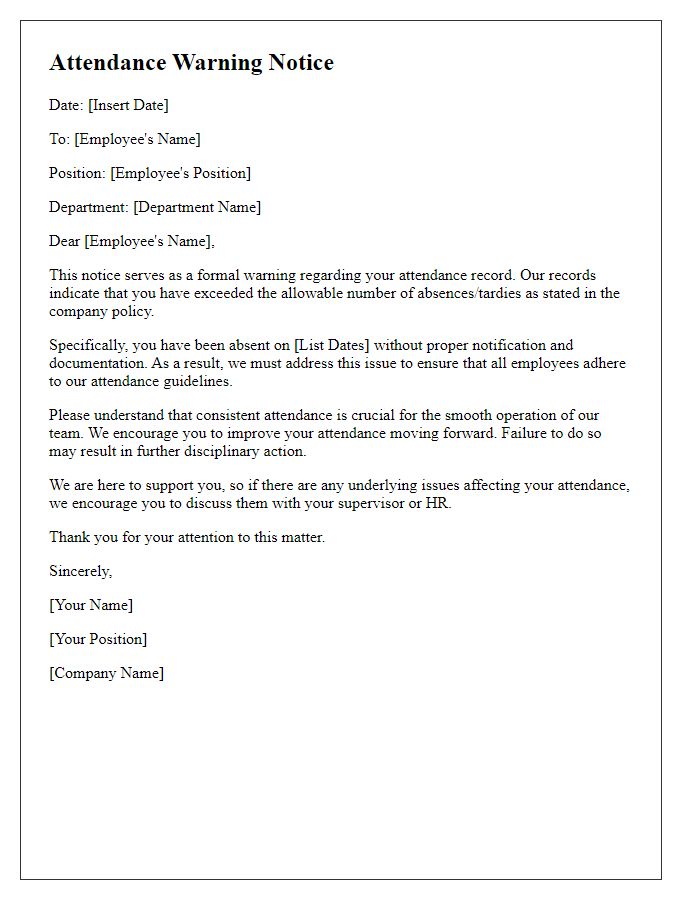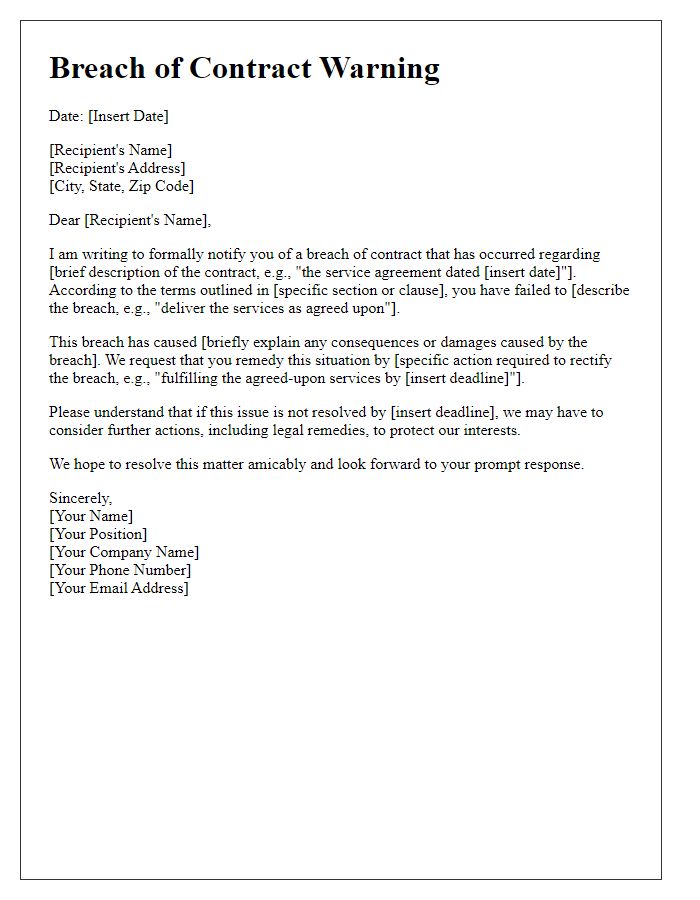When addressing an employee warning notice, it's crucial to communicate the issue clearly and professionally. This letter serves as an official record of a concern that has arisen in the workplace, ensuring that both parties understand the expectations moving forward. It's essential to provide specific details regarding the behavior or performance issue while also outlining the next steps for improvement. If you're looking for a comprehensive guide on how to effectively draft an employee warning notice, continue reading to discover our helpful insights and templates!

Employee Information
Employee warning notices serve as formal documentation of performance issues or misconduct within a workplace setting, designed to address concerns and provide a clear course of action. Key elements of an employee warning notice include the employee's name, job title, department, and employee identification number, ensuring accurate identification and context. Specific details regarding the nature of the warning, such as dates of incidents or observations, describe the behavior or performance that prompted the notice. It often outlines the company policies violated, relevant training or support previously provided, and consequences of repeated infractions, which can range from further disciplinary action to termination of employment. Finally, procedures for employee acknowledgment and response, including space for employee signature and date, facilitate transparency and communication in the disciplinary process.
Description of Incident
Employee warning notices often address specific behavioral incidents in the workplace. For instance, a case involving an employee displaying unprofessional conduct during a team meeting (held at the headquarters in Chicago on March 15, 2023) resulted in disruption and disrespect towards colleagues. During this meeting, the employee raised their voice, interrupted peers, and dismissed constructive feedback, creating a tense atmosphere. Such actions not only breach company policy regarding respect and collaboration but also undermine team cohesion and morale, impacting overall productivity. Documentation of this incident is crucial, as it serves as a formal record for future references and necessary corrective actions in accordance with company protocols.
Policy Violation Reference
An employee warning notice typically addresses policy violations in the workplace, specifying the particular breach, relevant company policies, and the potential consequences. For instance, if an employee repeatedly arrives late, the notice would reference the company's attendance policy that mandates punctuality, outline the specific instances of tardiness (e.g., arriving after 9 AM on three occasions in the past month), and detail corrective actions required to improve performance. Furthermore, it may indicate the possibility of further disciplinary measures if the behavior continues, emphasizing the importance of adherence to organizational standards for a productive work environment.
Expected Behavior/Corrective Action
An employee warning notice that outlines expected behavior and corrective action is crucial for maintaining workplace standards. The notice should clearly specify the violation, such as tardiness (repeated late arrivals exceeding three times in a month) or unprofessional conduct (disrespectful communication with colleagues), detailing specific incidents and dates. It is essential to reference company policy, such as the employee handbook (published June 2021), that defines acceptable behavior and the consequences of violations. The corrective action section should include a mandatory meeting with a manager to discuss improvements and set clear, attainable goals for future performance, including a follow-up review scheduled after 30 days. Additionally, documentation of the warning will be placed in the employee's personnel file as a record of the actions taken and the expectations moving forward.
Consequences of Non-Compliance
An employee warning notice serves as a formal document addressing instances of non-compliance with company policies or regulations. This notification outlines specific behaviors, such as tardiness, safety violations, or inadequate performance metrics, which diverge from established standards. The notice typically includes key details, such as the date of occurrence, the employee's name, and relevant policy guidelines. Additionally, it emphasizes potential consequences, including disciplinary action, suspension, or termination, if corrective measures are not taken. This document aims to encourage adherence to company policies, fostering a productive work environment and preventing further incidents of non-compliance.













Comments